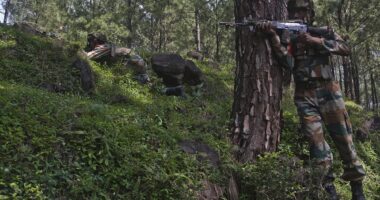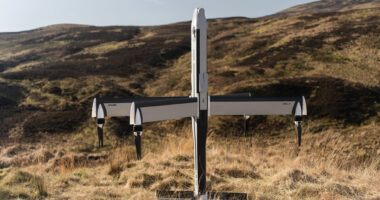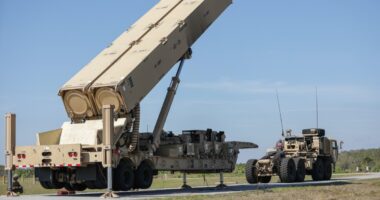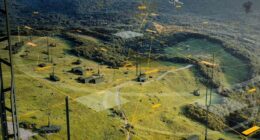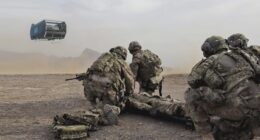Blurring the line between artillery and missile systems, Tiberius Aerospace is rolling out a ramjet-powered 155mm shell that flies at supersonic speeds and hits targets at extended ranges.
Dubbed the Sceptre, the shell blends the raw firepower of traditional munitions with the reach and precision of a missile, providing legacy artillery systems with a significant upgrade to meet the demands of modern warfare.
It reaches speeds of Mach 3.5 and soars above 65,000 feet (19,812 meters), flying beyond the reach of most jamming systems.
Its standout feature is the ability to strike targets at an extended range of up to 150 kilometers (93 miles), comparable to the reach of many short-range missile systems.

The Sceptre also delivers enhanced targeting precision, boasting a circular error probability of less than five meters (16 feet), a dramatic improvement over the 100-meter (328 feet) accuracy typical of traditional artillery.
The artillery shell is Tiberius’ flagship weapons program and is fully compatible with existing NATO-standard artillery platforms.
How Ramjets Revolutionize Artillery
A ramjet is an air-breathing jet engine that uses the projectile’s forward motion to compress incoming air, which then mixes with fuel and ignites to produce continuous thrust.
When integrated into an artillery round, the ramjet provides sustained propulsion after the initial gun launch, allowing the shell to maintain or even increase its speed during flight.
This propulsion dramatically extends the round’s range, enabling it to travel much farther than traditional shells relying only on the initial explosive charge.
Plus, the ramjet’s sustained thrust helps the projectile reach supersonic speeds and high altitudes, boosting its chances of evading interception and jamming.
While companies like Rheinmetall and Nammo have developed ramjet-powered artillery munitions before, none have entered active service to date.
Unlike those earlier designs, which use solid rocket fuel, the Sceptre employs a liquid-fuel system compatible with diesel, JP-4, and JP-8 fuels.
